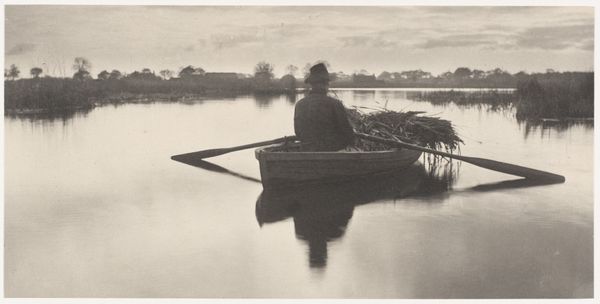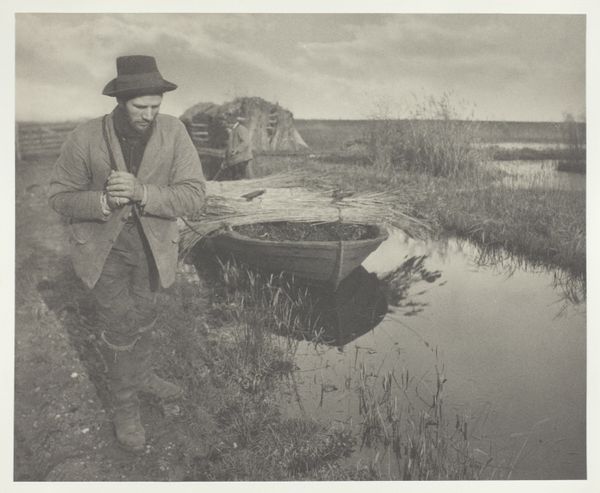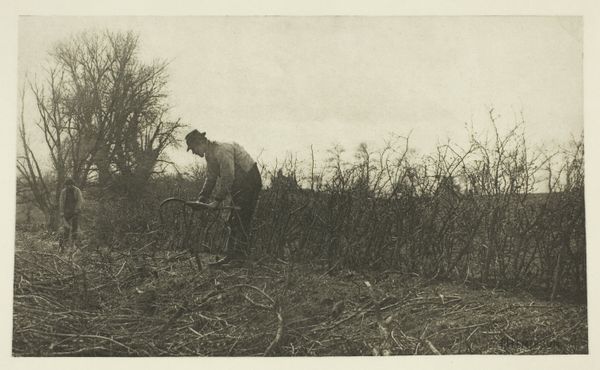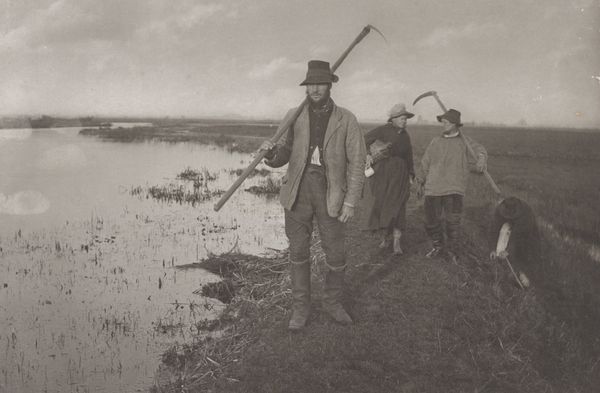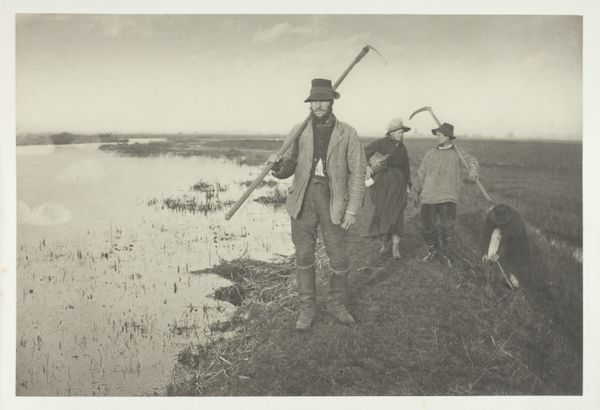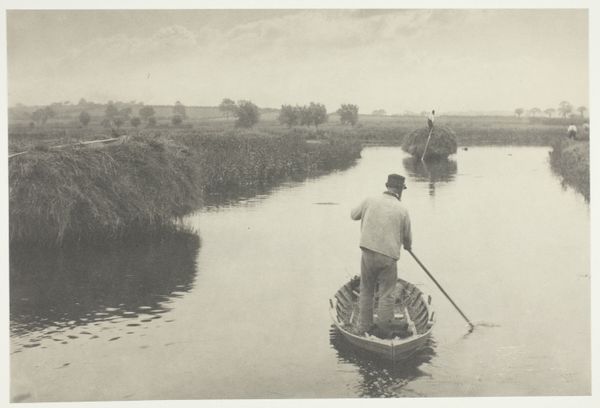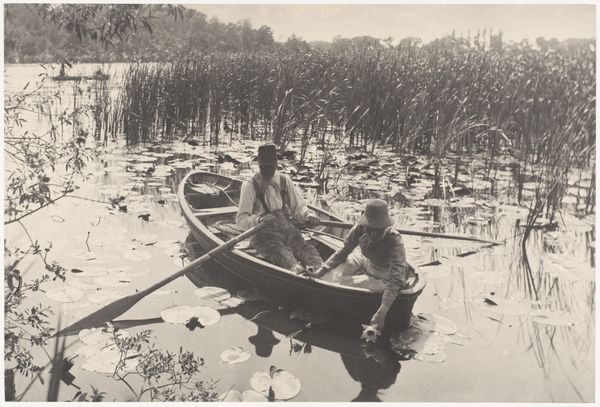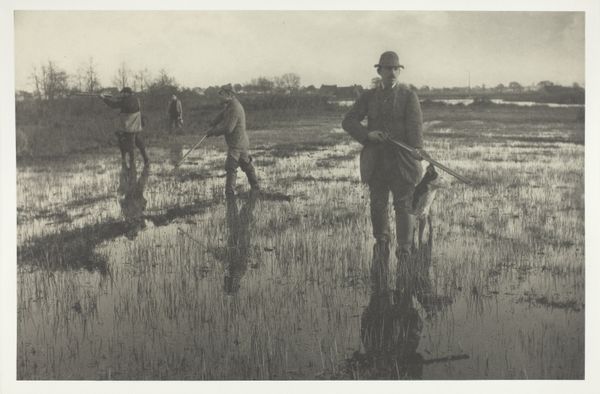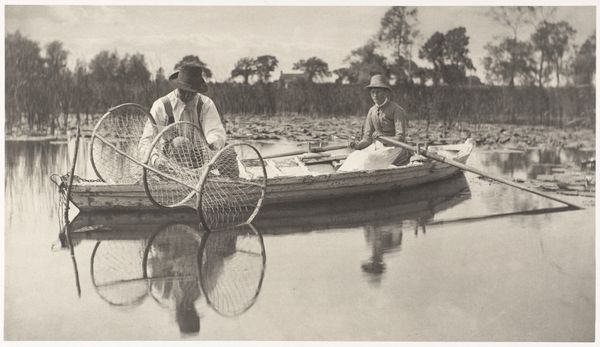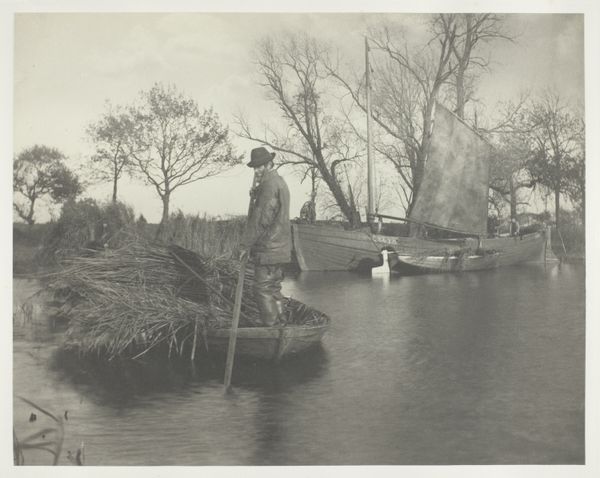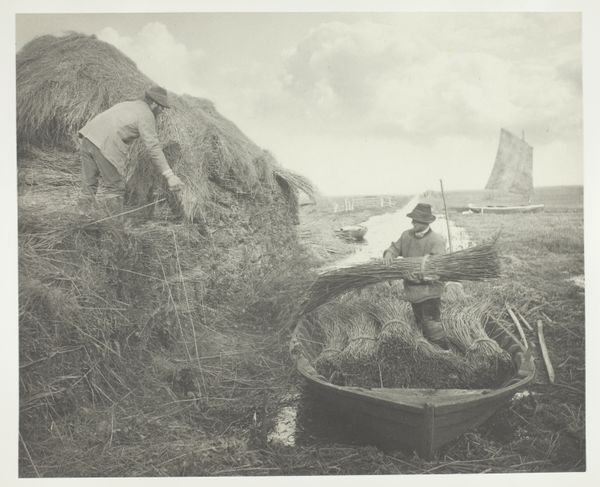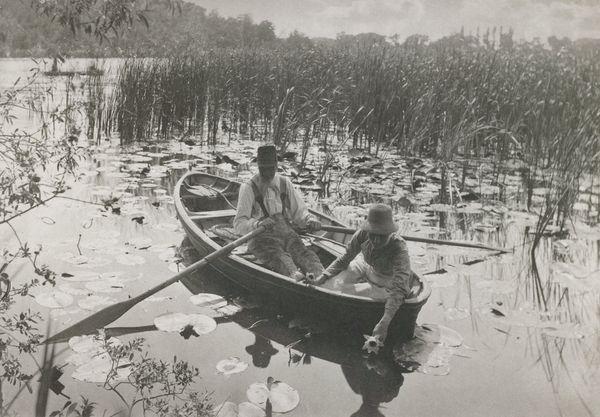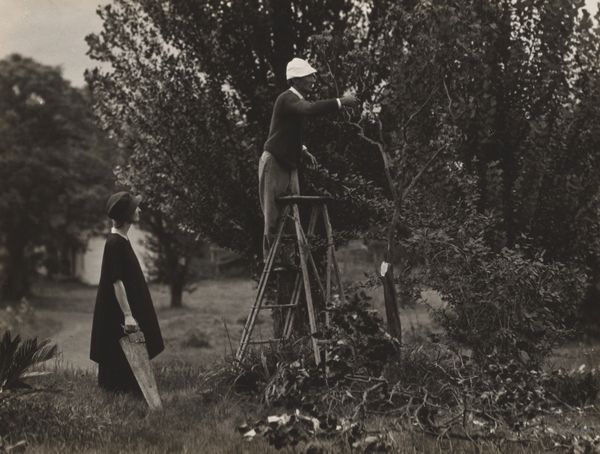
print, plein-air, photography, gelatin-silver-print
#
print photography
#
16_19th-century
#
pictorialism
# print
#
impressionism
#
plein-air
#
landscape
#
photography
#
gelatin-silver-print
#
naturalism
#
realism
Dimensions: 18.8 × 23.9 cm (image/paper); 28.5 × 40.9 cm (album page)
Copyright: Public Domain
Peter Henry Emerson made this photograph, “Cutting the Gladdon,” using the platinum printing process, a technique he favored for its tonal range. Emerson believed photography should depict rural life authentically, diverging from the staged, romanticized views common in art photography. He captured ordinary people engaged in their daily work. This image shows a man harvesting reeds, probably in the Norfolk Broads, a region in eastern England. In Victorian England, there was an artistic debate about photography’s status. Was it art or just a mechanical reproduction? Emerson entered this debate by advocating for photography as a high art form, as long as it was true to nature. Cutting the Gladdon is a social document, but it is also a statement about art, and how it reflects the realities of life and labor. To understand Emerson’s work, we can research the history of photography, the Arts and Crafts movement, and the social conditions of rural England in the late 19th century. These resources help us appreciate how Emerson saw photography as a tool for both artistic expression and social commentary.
Comments
No comments
Be the first to comment and join the conversation on the ultimate creative platform.
